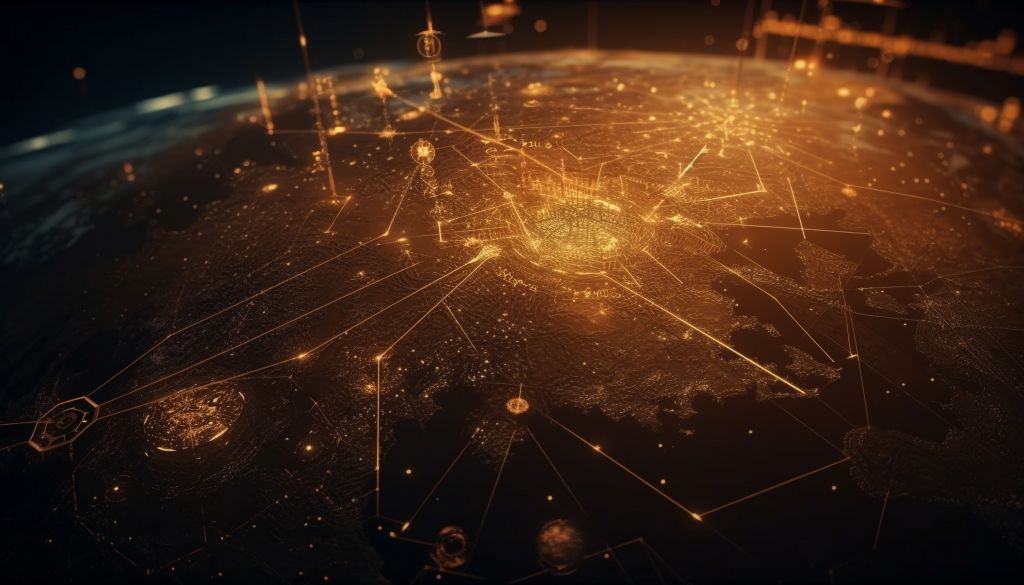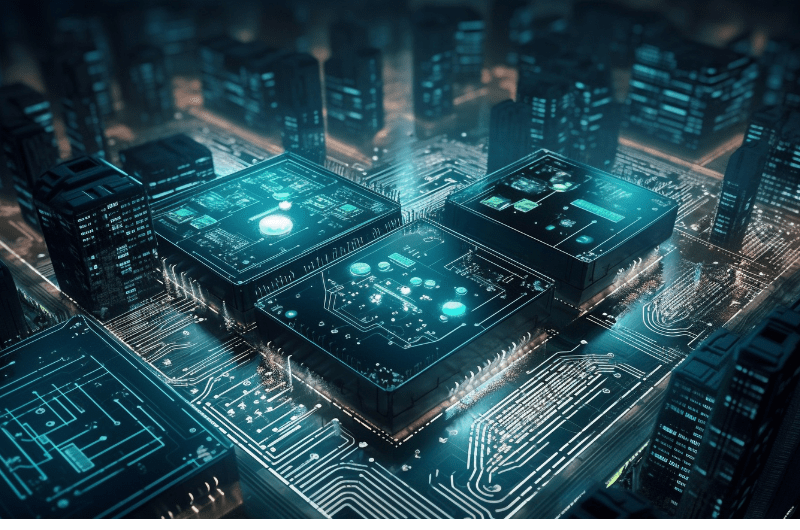Intro
Artificial intelligence (AI) is a rapidly evolving field with the potential to transform many aspects of our lives. It is already having a significant impact on the job market, creating new jobs and transforming existing ones. Besides that, AI is democratizing innovation, helping people to be more productive and creative. This is leading to a wave of innovation from startups and individuals.
However, in order to comprehend AI’s scope, it’s important to consider the fundamental aspects that led to AI’s meteoric rise.
AI’s boom
Throughout history, society always had the need for technological innovations. Although the technology’s complexity has always adapted to the needs of their respective eras, AI has emerged as a driving force in the realms of Industry 4.0. In other words, its capacity to learn from experience in the same way humans do sets this technological revolution apart from the past ones.
However, AI doesn’t represent a recent invention, but rather the culmination of decades of research and development. For this reason, a series of factors have contributed to AI becoming an essential tool for industries and to our routines. These variables can be broken down into:
Globalization
Globalization is the process of increased interconnectedness among countries and regions. It made it possible for goods, services, information, and people to move across borders more freely and quickly than ever before. In this volatile scenario, demands for faster solutions have emerged, and AI is crucial to solve these problems. And, while AI accelerates the way we approach our routine tasks, it generates more requirements for high-speed responses.
Data abundance
The total amount of data created, captured, copied, and consumed globally has reached 64.2 zettabytes in 2020. Which allowed the foundation of AI’s proper operation, since it relies on data for training and learning, and on its adequate availability and leveraging to analyze and learn from. In this context, the availability of massive datasets has grown exponentially. This enables AI to identify patterns and solutions more quickly and accurately.
Advanced application integration
Finally, the main responsible for AI’s boom undoubtedly is the integration between applications. This technique allows crossing each of the models skills, enabling synergistic collaborations and fostering innovation across industries. By combining AIs, companies can quickly create new systems that are more efficient. For example, an AI that generates text can be combined with a model that translates languages. This generates an integrated system that will be able to text in multiple languages.

All these factors have actively contributed to AI’s dissemination. According to a 2022 IBM report, more than a third of companies (35%) report the use of AI in their business, a four-point increase from 2021. Yet, as AI continues to reach the masses, ethical concerns growed to be more urgent than ever. While algorithms become increasingly sophisticated, the potential for misuse and harm increases, prompting urgent questions about responsibility, accountability, discrimination and fairness.
Ethical concerns
With AI reaching the common citizen, multiple necessary questions start to be asked. Indeed, the algorithm’s abrasive capacities can harm sensitive topics that demand careful consideration. These concerns span a wide range of areas, from perpetuating bias, discrimination and misinformation to replacing human work.
To enhance their responses, AI models are trained based on pre-existing information, which can contain harmful biases. For instance, if an algorithm receives positive feedback about a response that carries discrimination or sensationalism, it may continue to replicate that behavior further on if not censored. This scenario may implicate toxic speeches gaining voice around society.
That is the case of recommendation algorithms, used by social media and content platforms to inadvertently amplify divisive and extremist content. These algorithms aim to maximize user engagement, often leading to a filter bubble effect where users are exposed to content that aligns with their existing beliefs. And, beyond those harmful possibilities, there’s still a major concern surrounding Artificial Intelligence: human labor replacement
This critical question is inherent to the AI discussion, displaying a scenario in which workers see their job threatened by a machine. In this context, Automation and AI-driven systems can perform repetitive tasks with greater accuracy and speed, making certain jobs redundant. This displacement can lead to unemployment and job insecurity for many workers, indicating the urgence of a better way of allocating AI technologies without harming individuals.
Why AI is becoming a consolidated reality
While it is true that AI can automate certain tasks, it is equally important to recognize its significant role in creating new jobs across various areas. AI is reshaping how industries operate, from impacting job titles directly and indirectly to becoming affordable for the masses. In this ever-growing journey, this technology passed from being a consolidated trend to a reality. Furthermore, beyond its known outcomes, let’s understand how AI is impacting the job market:
Jobs in the field of AI itself
Machine learning engineers, data scientists, AI ethics specialists, and AI application developers. These jobs are in high demand as businesses increasingly adopt AI to automate tasks, improve efficiency, and create new products and services. These roles encompass constantly developing and training AI models.
Jobs in other industries
AI is freeing human workers to focus on more creative and strategic tasks. For example, models are being used to develop new medical treatments, automate financial transactions,and execute automated inspections in heavy asset facilities. This is creating new opportunities for workers with skills in healthcare, finance, and engineering.
Transforming existing jobs
By making them more efficient and productive, these models are guiding innovation through automating routine tasks, providing data-driven insights and enhancing decision-making. In this context, workers who are able to adapt to these changes and develop the skills and knowledge necessary to work with AI will be well-positioned for success in the future of work.
Beyond that, tools such as cloud services, open-source models, voice assistants and task automation are all contributing to this new era. As AI continues to evolve and integrate into our lives, it has the potential to empower individuals, improve businesses, enhance healthcare, and revolutionize education.
Conclusion
As AI follows its journey, from being a consolidated trend to a vivid reality, it stands as a formidable force, transforming industries and reshaping daily routines. And, despite these models representing a disruptive change, they create new opportunities and enhance existing job roles by optimizing efficiency and productivity. For this reason, algorithms have become consolidated, being the driving force for the new technologies to come.
Overall, AI is a powerful technology with the potential to revolutionize many aspects of our lives. It is important to use this technology wisely and ethically to ensure that it benefits everyone. Within this rapidly changing scenario, it’s necessary not to neglect the human side, integrating our emphatic perspective to AI’s enhanced safety, efficiency, innovation and sustainability.



